Superheroes Through A Microscope: Spider-Man
With Marvel’s “Avengers: Infinity War around the corner and DC’s Justice League debut last November, never has it been a more exciting time for superhero geeks. For the past years, solo movies of different superheroes from way back has dominated the Big Screen and has given a fresh new look on our beloved childhood idols. It is truly the age of heroes.
So, to acknowledge this so called “Modern Age of Heroes” and to invigorate the child in us along with our now educated adult selves, I will be posting a series of blogs which I will call “Superheroes Through a Microscope” where we will look at our superheroes behind the mask and uncover the actual science that the authors might have used to fuel their imagination. And there’s no one better to kick off this project than our friendly neighborhood
SPIDER-MAN

Disclaimer: Though the science mentioned in the “Superheroes Through a Microscope” are genuine, its application to the superheroes is mainly hypothetical and is based on the facts and knowledge that I gathered through research.
In the early 1960's when Spider-man debuted in the comic world, teenage superheroes were usually given the role of a sidekick. The introduction of this new series eventually broke ground by giving life to Peter Parker, the high school student from Queens behind Spider-Man's mask and whose dilemmas such as popularity, rejection and insecurities were highly relatable for young readers. While Spider-Man had all the makings of a sidekick, he did not have any mentor like Robin with Batman and Kid Flash with Flash which led him to learn on his own that "with great power, comes great responsibility"
The Radioactive Spider.
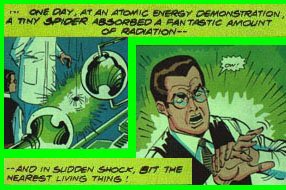
Photo Credits in this link
Up to date, there has been 3 reboots of the Spider-Man movie yet all those versions start with one thing. Its not a bird, its not a plane. Yes! Its a spider. The radioactive spider that bit our young Peter Parker. But can radioactivity really alter one’s molecular structure? Absolutely!
Best example of this is the Chernobyl Disaster in 1986 where it released radioactive chemicals in the area reaching up to at least 620 mi-radius. Over the years, the animal population in the area have increased because of the absence of the human populace but so did their abnormalities because of the high radiation in the area.

Mutated Animals around Chernobyl
But by comparing Spider-Man with these real mutations, he just seems so healthy. Why so? It may be because of the method and type of radiation these animals and Spider-man was exposed to. One specific type of radiation that has the ability to alter one’s DNA is Ionizing radiation. According to R.E.R.F.(Radiation Effects Research Foundation) in Japan, when ionizing radiation causes DNA damage in male or female reproductive cells, that alteration can be transmitted to the next generation. This type of radiation affects DNA by taking the codons and mixing/replaing/destroying them. A codon is a triplet of adjacent nucleotides in the messenger RNA chain that codes for a specific amino acid in the synthesis of a protein molecule.
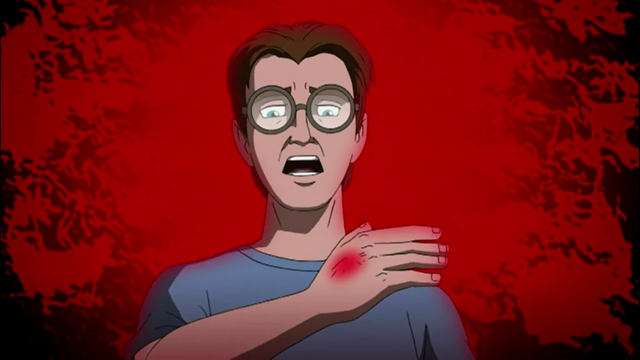 )
)The Spider Bite
To avoid getting too technical, This is basically one of the things that construct your genetic traits such as your hair color, body shape, and eye color. As far as scientists know, in order to actually get the desired effects of radiation. The organism must be exposed to the radiation in a very controlled environment with specific requirements which is actually the case in the Spider-man comics. Since Peter Parker is not an offspring of a human and a spider, we can only assume that the radioactive spider was able to transfer the radiation inside it with its DNA through its venom to Peter’s blood ; Thus, the birth of Spider-man.
Wall-Climbing

One of the many gifts Spider-man has is his ability to climb up walls just as spiders do. So how do spiders climb up vertical spaces? When a spider climbs up a 90-degree vertical surface it’s actually using hundreds of thousands of individual microscopic parts on the surface of its body. Those 8 legs of theirs actually contain tiny hairs that help them climb surfaces with no apparent footholds. While small spiders are seemingly hairless to the naked eye, their feet are covered in tiny hairs. In fact, the little hairs on their feet are covered in even smaller hairs called setules. Arachnids have more than half a million of these triangular-tipped hairs.
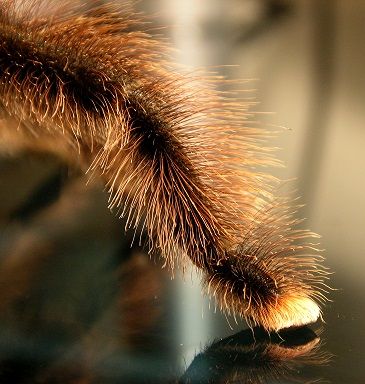
A Spider's Leg
Setules don't actually dig into the surface as they climb; Rather, their setules trigger a scientific reaction known as the van der Waals force. This phenomenon is essentially oppositely charged molecules, within microscopically close distances ,that creates attraction with one another. Simply imagine the tips of a spider's setules as tiny magnets that allow it to stick to a surface and multiply it by at least half a million. That’s how strong the attraction is. However, the van der Waals force effect is inversely proportional to the spider’s size and volume. Hence, not all spiders can climb using their setules, but that doesn't stop them from doing so.

Screen Capture from Spider-Man (2002)
So if he’s too big, how does Spider-Man climb up walls? The answer might be with a tarantula whose size is too heavy to climb walls using setules alone. These creepers secrete a small amount of a silky adhesive substance from each of its feet that acts like a paste while leaving microscopic "footprints" of the adhesive in its path. So Spider-man’s method might be similar to a tarantula-- a combination of both the setules and the adhesive. Only more powerful because of the mutation.
Note: If you wish to learn more about van der Waals force in physical chemistry click on this link
Spidey Senses
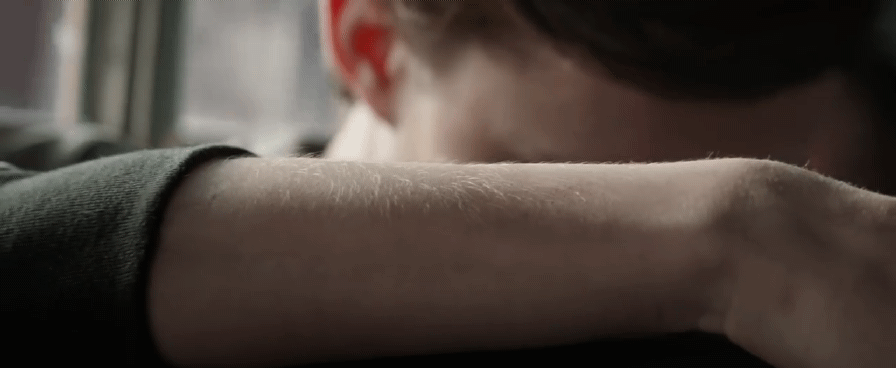
Whenever danger is near, Spider-man would always feel a tingling sensation that alerts him of the impending danger. While this may seem telepathic, it is actually derived from a spiders way of detecting movements in their environment. Arachnids have these special “hair” called Trichobothria.
.jpg)
The Anatomy of a Trichobothria 1,2
The Trichobothria fit into the bottom of a broad and deep cup where it is connected to a membrane with exceptional flexibility. The main function of this lies in the detection of airborne vibrations and air currents which greatly helps the spiders protect themselves from unseen predators such as birds and lizards. Unlike the ordinary “hairs”, which are tapered, the trichobothria have the same size throughout their length. The slightest vibration in the air can excite the small group of sensory cells which ensures their innervation or stimulation
A Call to the Geeks
These are just a few of Spider-Man's origins and power yet he still has more to show such as his web-slinging feats and super strength. However, so as not to to create such a length post, I shall leave it to your hands to decide if I should continue with Spider-Man or move to the next superhero YOU want. Feel free to comment below and who knows , I might choose your beloved Idol next.
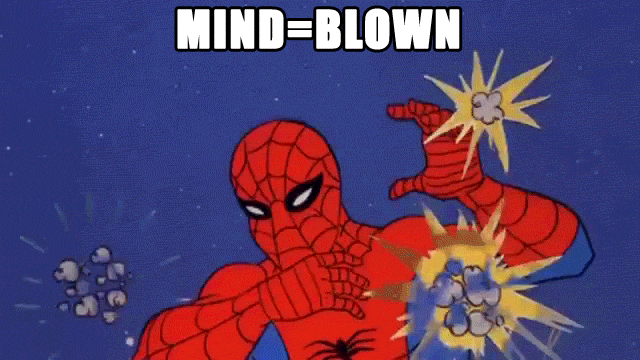
Again, though all the science mentioned above are real, its application to superheroes is just an exaggeration to provide a fun way of integrating knowledge with entertainment. But, with the continuous progress of science and technology, who knows? The scientific principles stated above might serve as the foundation for us to really have this web-slinging hero out the comic book sheets and into our very own streets.
Image and GIF Sources:
1, 2, 3, 4, 5, 6, 7, 8
Web Sources:
http://animals.mom.me/spiders-climb-5719.html
http://www.rerf.jp/radefx/genetics_e/geneefx.html
http://abcnews.go.com/Technology/FutureTech/story?id=99541&page=1
https://en.wikipedia.org/wiki/Trichobothria


.gif)

Come on! Now someone has added 2035! Give May a break! :D
Hilarious!
1st one is the best one!!
its too good!!
Hmm You have a point @themanualbot hehe. Your sharing a great insights about many topics and its interesting to read it . Thanks
Thank you, I will be sharing more of these. :)
Spiderman is one of the superheroes who can overcome the 4th wall like deadpool :) @themanualbot
Since when?! Now that's just wishful thinking!
nice
interesting posts I like your posts. because your post can be an insight for me and users steemit .. post interesting .. thanks for you.
This is a very nice post...mehn dope
There's one fact about Peter's wall-climbing ability that doesn't add up anyway: if he's too heavy for spatules, and his costume will lock i any adhesive substance he secretes, then how does he do it? The MCU is doing a great job of not giving us details... it's just perfect. I think that's where the Amazing Spiderman failed --it tried to explain everything to the last science!
Spiderman has always been my favorite hero. If only he isn't always so tragic. :D